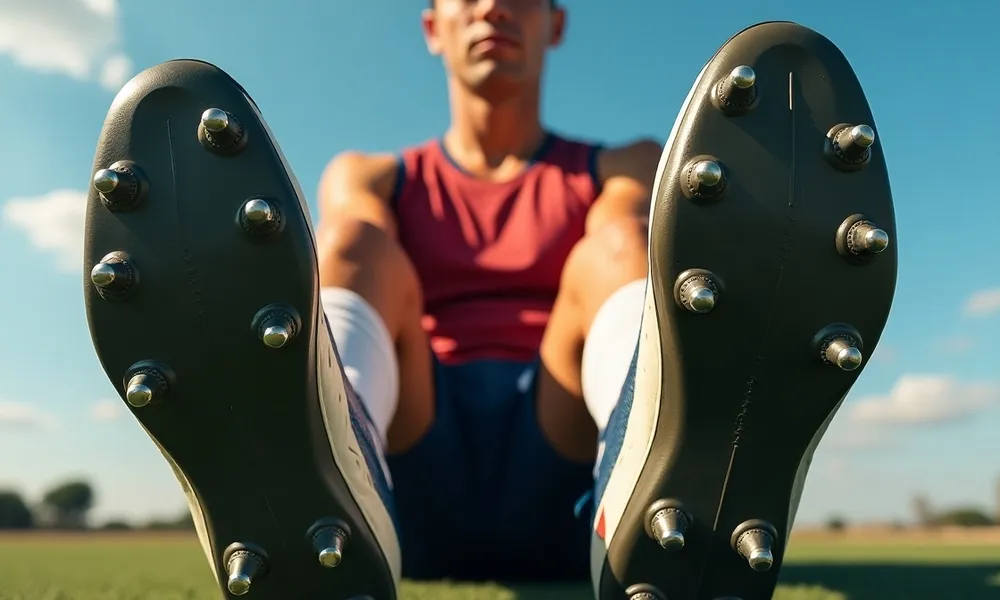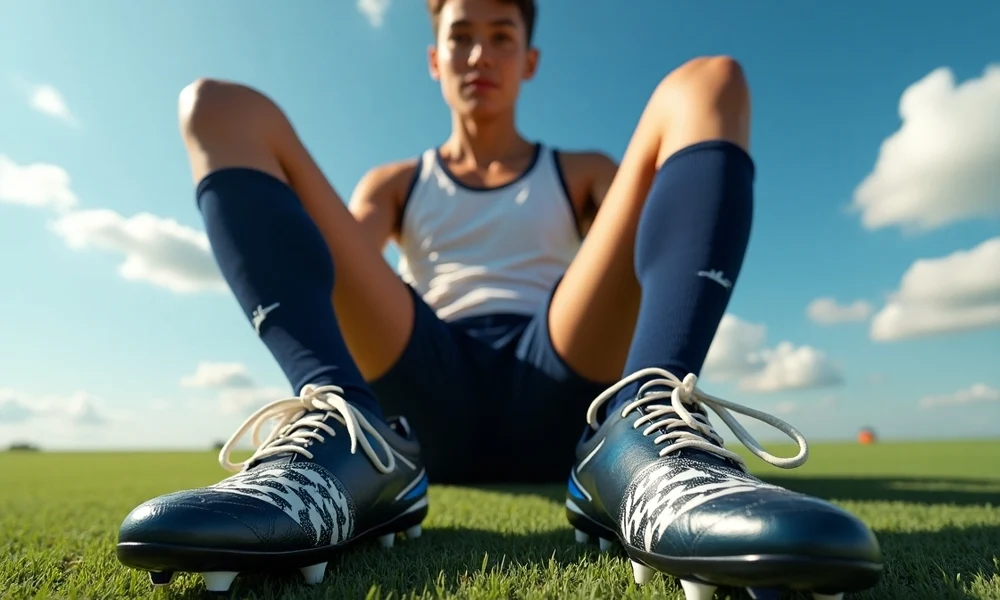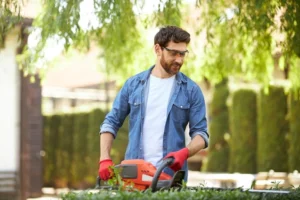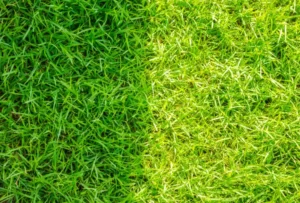Can you wear cleats on turf? This is a common question among athletes and sports enthusiasts as artificial turf becomes increasingly popular in sports facilities around the world. Because of its resilience to different weather conditions, low care requirements, and durability, artificial turf, also known as synthetic grass, is frequently utilized. However, playing on this surface requires careful consideration when it comes to footwear.
Choosing the right shoes is essential not only for performance but also to prevent injury. Wearing the wrong type of cleats on turf can affect traction, comfort, and even lead to damage of the surface or harm to the player. That’s why it’s important to understand the differences between cleats designed for natural grass and those meant specifically for cleats artificial grass. This guide will explore whether using cleats on turf is advisable, and what type of footwear is best suited for artificial playing surfaces.
Assessing Footwear Compatibility With Artificial Turf

When playing sports on different surfaces, the type of footwear you choose can significantly impact your performance, traction, and injury risk. This is especially true when comparing artificial turf to natural grass. Understanding the distinctions between these surfaces helps answer a common question among athletes: should you wear cleats on turf?
Differences Between Artificial Turf and Natural Grass
Natural grass is softer, more forgiving, and can vary depending on weather and maintenance. Grass fields may become muddy, uneven, or worn down, especially in high-traffic areas.
In contrast, artificial turf provides a more uniform and durable playing surface. However, it is firmer than natural grass and lacks the natural give, which can affect how athletes move and how their footwear interacts with the surface.
How Turf Impacts Traction, Performance, and Safety
On turf fields, traction becomes a key concern. While cleats provide grip, excessive traction on turf can actually increase the risk of joint injuries, particularly in the knees and ankles. This is because the turf doesn’t allow cleats to release as easily during sharp turns or sudden stops, increasing torque on the lower body.
Additionally, turf can run hotter than grass, affecting both comfort and the breakdown of certain shoe materials over time. It also has less shock absorption, potentially contributing to more impact-related injuries.
Why Certain Shoes Work Better Than Others on Turf
This brings us to the question: should you wear cleats on turf? The answer depends on the type of cleat:
- Molded cleats: These can be worn on turf but may cause discomfort or excessive grip if the studs are too long.
- Turf shoes: Designed specifically for artificial turf, these have shorter, rubberized studs that provide better traction without the injury risk associated with traditional cleats.
- Detachable cleats: Not recommended for turf due to their longer spikes and harder materials, which can catch in the turf and increase injury risk.
When choosing cleats on turf fields, athletes should consider turf-specific models or turf shoes. These are designed to strike a balance between grip and release, reducing the risk of injury while maintaining optimal performance.
You should read about Artificial Turf installation in the Bay Area.
Can You Wear Cleats on Turf?
Yes, but it depends on the type of cleats and the specific turf field surface. Not all cleats are created equal, and using the wrong kind can affect both safety and performance.
When Cleats Are Acceptable on Turf
You can wear cleats on turf fields, especially if they’re designed for artificial surfaces. There are two common types:
- Turf cleats (or turf shoes): Specifically made for artificial grass, these have small rubber studs that provide grip without digging too deeply into the turf.
- Molded cleats: These can sometimes be used on turf, especially if the studs are shorter and the field permits them.
Risks of Wearing Regular Cleats on Artificial Turf
Using traditional or long-stud cleats—like those designed for natural grass—on artificial grass fields can lead to several issues:
- Increased risk of injury: Standard cleats can grip too tightly on turf, increasing torque on the knees and ankles, which may lead to sprains or ACL injuries.
- Turf damage: Some facilities prohibit long or metal cleats because they can tear into the synthetic surface and shorten the field’s lifespan.
- Reduced comfort and performance: Harder turf fields paired with stiff or inappropriate cleats can cause discomfort and reduce your agility or speed.
So while you can wear cleats on a turf field, make sure they’re compatible with artificial grass to protect both yourself and the playing surface.
You can also read about How To Clean Turf Grass.
Turf Shoes Vs. Traditional Cleats

Choosing between turf shoes and traditional cleats comes down to understanding how each performs on artificial turf. Both have distinct advantages, but they’re designed for different conditions.
Key Differences in Design, Sole Patterns, and Studs
Feature | Turf Shoes | Traditional Cleats |
Sole Material | Rubber sole | Plastic, rubber, or metal |
Stud/Pattern Design | Dozens of small rubber nubs or patterns | Fewer, longer studs (molded or detachable) |
Surface Type | Best for artificial turf and hard surfaces | Designed for natural grass or soft ground |
Flexibility | More flexible and sneaker-like | Often stiffer for added grip on grass |
Pros and Cons for Turf Play
Turf Shoes
Pros:
- Excellent traction on artificial turf
- Lower injury risk (less foot/ankle torque)
- Lightweight and comfortable
- Ideal for training and indoor turf facilities
Cons:
- Not enough grip for soft or muddy natural fields
- Less ankle support in aggressive cutting movements
Traditional Cleats
Pros:
- Superior grip on natural grass
- Better for wet or uneven terrain
- More ankle support in some models
Cons:
- Can cause too much traction on turf (increased injury risk)
- May be banned on some turf fields
- Less cushioning on hard surfaces
When to Choose Turf Shoes Over Cleats
Choose turf shoes when:
- You’re playing on artificial grass or a turf field
- You want more comfort and reduced injury risk
- The facility restricts traditional cleats
- You’re in a training session or playing indoors
Choose cleats when:
- You’re playing on natural grass
- The field is soft, wet, or muddy
- You need maximum traction and support
What Kinds of Cleats are Best for Artificial Turf?
If you’re wondering should you wear cleats on turf, the answer is yes—but only the right kind. Not all cleats are made for artificial grass, and using the wrong pair can lead to discomfort, poor traction, or even injury. Here’s a breakdown of cleat types and which ones work best on turf fields.
Cleat Types Explained:
Cleat Type | Meaning | Best Surface |
FG | Firm Ground | Natural grass fields (dry/firm) |
AG | Artificial Ground | Artificial grass and turf |
SG | Soft Ground | Wet, muddy natural grass |
TF | Turf | Artificial turf with short rubber grass-like blades |
Best Cleats for Artificial Grass: AG and TF
- AG (Artificial Ground) cleats are specifically engineered for modern artificial grass fields. They feature:
- Shorter, hollow studs to reduce pressure and prevent joint strain
- Wider stud patterns to spread force more evenly
- Excellent for newer 3G and 4G turf surfaces
- TF (Turf) shoes are best for older or compact turf fields:
- Rubber nubs or ridged soles for close-to-ground grip
- More cushioning, like a hybrid between a sneaker and cleat
- Ideal for training, small-sided games, and indoor turf fields
Materials, Stud Shapes & Cushioning Considerations
- Upper materials: Lightweight synthetics or mesh offer breathability and flexibility. Avoid heavy leather on turf—it retains heat and moisture.
- Stud shape: Round or conical studs release better on turf, reducing injury risk. Avoid long or sharp-edged studs.
- Cushioning: Since turf fields are harder than grass, look for shoes with ample midsole padding and heel support to reduce impact stress.
Recommended Cleats for Turf Compatibility
If you’re shopping for cleats on artificial grass, here are some trusted turf-ready options:
- Nike Phantom GT2 TF – Excellent for fast cuts on turf
- Adidas Predator Accuracy.3 TF – Popular for control and comfort
- Puma Future Z 4.4 TT – Designed for responsiveness on turf surfaces
- New Balance 442 V2 Team TF – Great all-around turf trainer
- Nike Tiempo Legend 9 AG – Great AG cleat for newer turf fields
Final Thoughts
So, can you wear cleats on turf? Yes—but only if they’re the right kind. Using cleats specifically designed for artificial grass, such as AG or TF models, ensures better traction, comfort, and injury prevention. Avoid wearing traditional firm-ground or soft-ground cleats on turf, as they can cause excessive grip and damage the surface. Choosing the correct footwear not only protects you but also helps maintain the quality of the field. If you’re unsure which cleats are best for your needs, Lakota Design Group is here to help. Reach out to us for expert advice and quality gear recommendations. Contact us today and play smarter, safer, and stronger.
FAQs
Should You Wear Cleats On Artificial Grass?
Yes, but only turf-specific cleats. Wearing regular cleats on artificial grass can damage both the turf and increase the risk of joint injuries due to excessive grip. Turf shoes or AG cleats with shorter, rubberized studs are the best option for artificial surfaces.
What’s The Difference Between Ag And Tf Cleats For Turf?
AG (Artificial Ground) cleats have shorter, hollow studs designed for newer turf fields, providing better cushioning and reducing joint strain. TF (Turf) shoes feature rubber nubs or ridged soles that are ideal for compact or indoor turf surfaces, offering comfort and improved traction without digging into the field.
Can You Wear Firm-Ground (Fg) Cleats On Turf?
It’s not recommended to wear FG cleats on turf. FG cleats are designed for natural grass and have longer, sharper studs that can cause too much grip on artificial surfaces, leading to potential injuries and turf damage.
Are Metal Cleats Allowed On Turf?
Metal cleats are generally not recommended for artificial turf. They can tear up the surface, leading to field damage and potentially violating field rules. Most turf fields prefer players to wear rubber or plastic-studded cleats designed specifically for artificial surfaces.
What Types Of Cleats Are Best For Turf Fields?
AG and TF cleats are best for turf fields. AG cleats are ideal for modern synthetic grass, while TF shoes work well on older, compact turf fields or indoor surfaces. Both types provide optimal grip and comfort without increasing the risk of injury.





